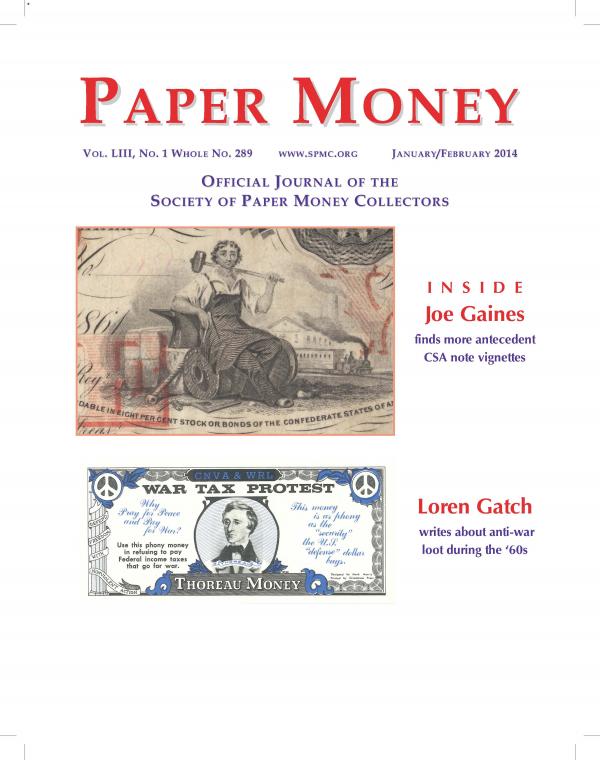Please sign up as a member or login to view and search this journal.

Table of Contents
The Paper Column: Series of 1929 Overprints.............................. 3
By Peter Huntoon & James Simek
Collector Wants to Know about KS Lottery Ticket....................... 33
By Rick Osterholt
Obsolete Bank Notes with Vignettes Used on CSA T-23 & 32 . . 34
By Joseph J. Gaines, Jr.
The Paper Column: Kearny, NJ National Banks Yield Tales . . .45
By Peter Huntoon & Robert Hearn
Nebraska Territory 1857 City of Omaha Notes........................... 51
By Marv Wurzer
The Buck Starts Here: Card Shows Unused Design......................... 62
By Gene Hessler
Small Notes: Late-Finished $5 Face Plate 147................................ 64
By Jamie Yakes
‘Thoreau Money’ and War Tax Resistance.................................. 66
By Loren Gatch
Lofthus Paper Money Story Kicks Off Frenzy.............................. 50
New Members.............................................................................. 33
Help the Society Reconnect with These Life Members............... 44
President’s Column by Pierre Fricke........................................... 56
Uncoupled: Paper Money’s Odd Couple by Boling & Schwan............... 58
Money Mart....................................................................................... 57
Fricke CSA Booklet Offers ‘Elegant, Compact Bargain” review ....................... 74
Second Call: George W. Wait Memorial Prize Announcement.............. 75
Civil War Stamp Envelopes, The Issuers & Their Times review........... 76
Draft of SPMC Revised Book-Publishing Policies................................. 78
The Back Page with Loren Gatch & Fred Reed.......................... 80


